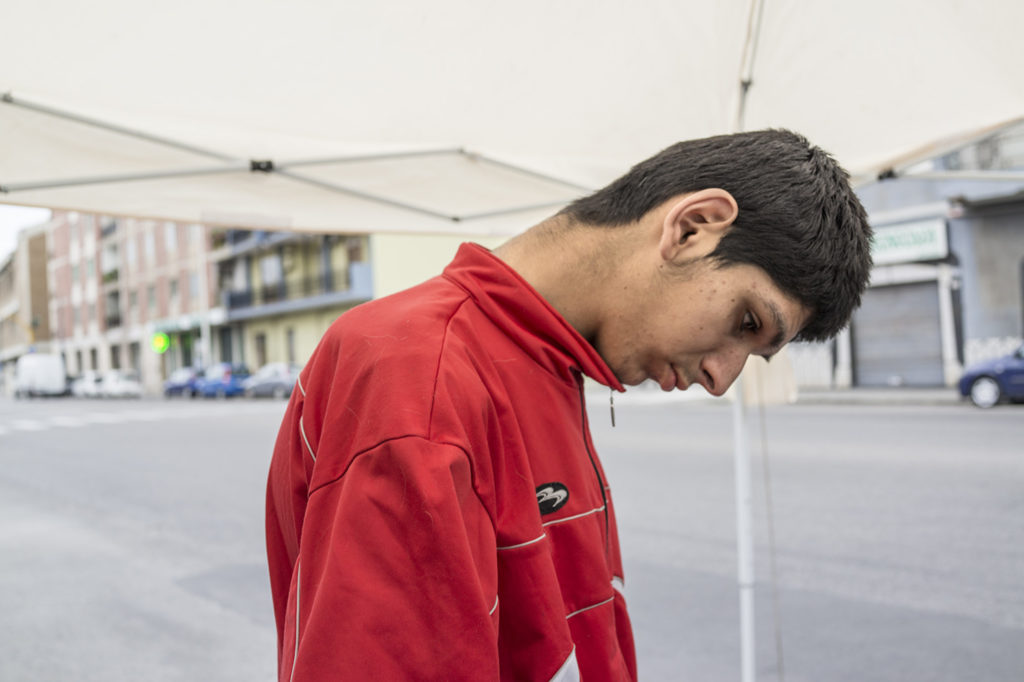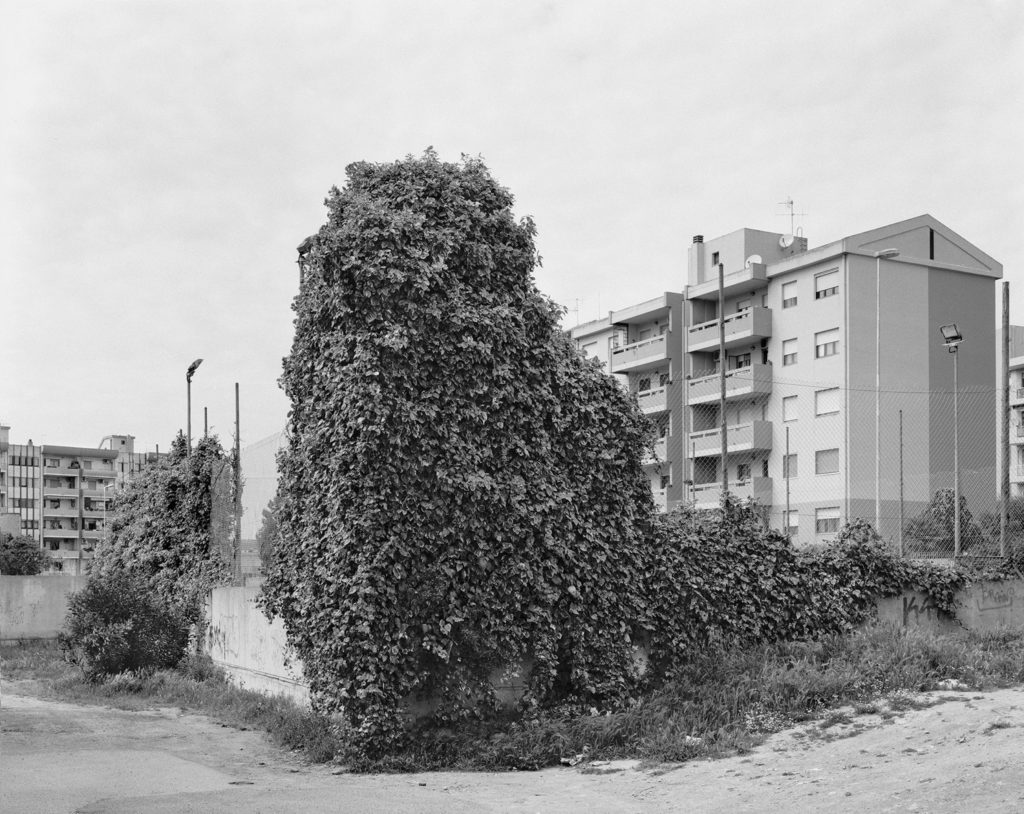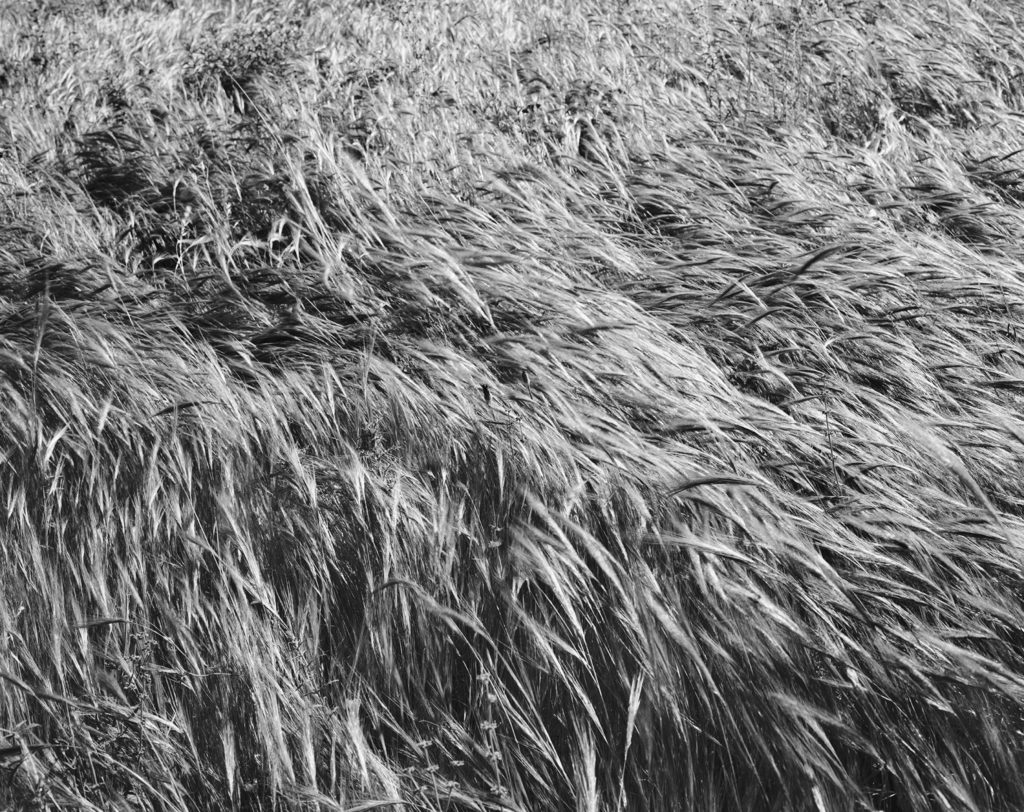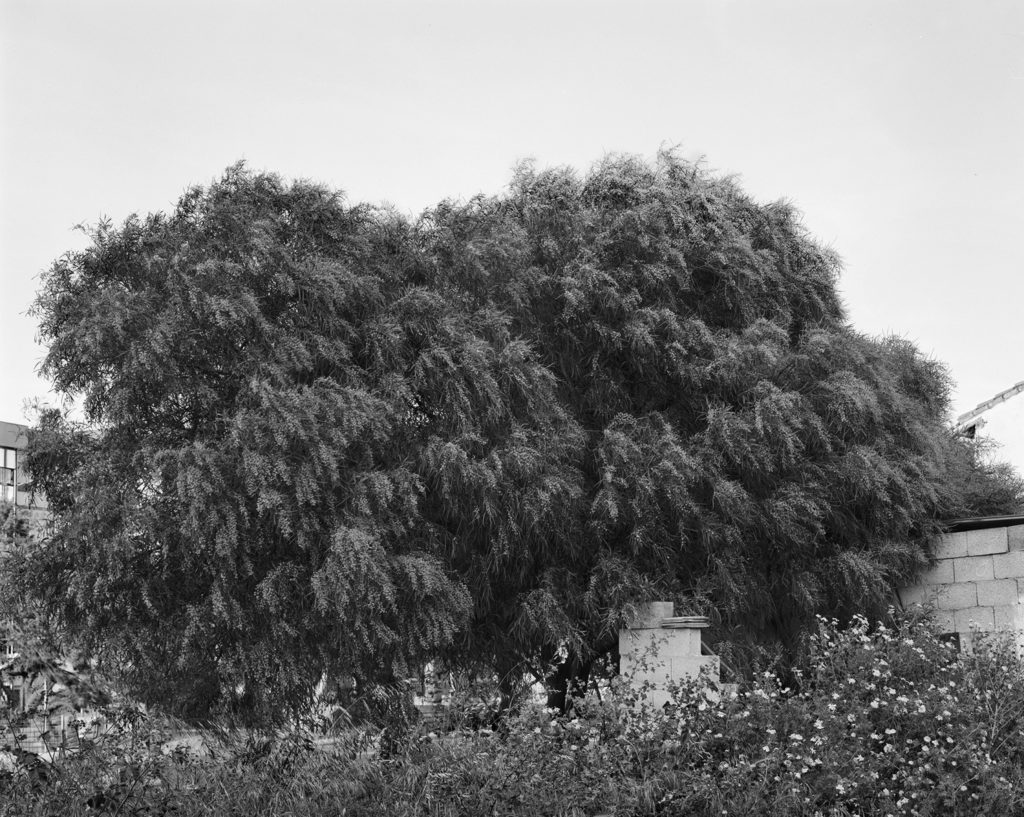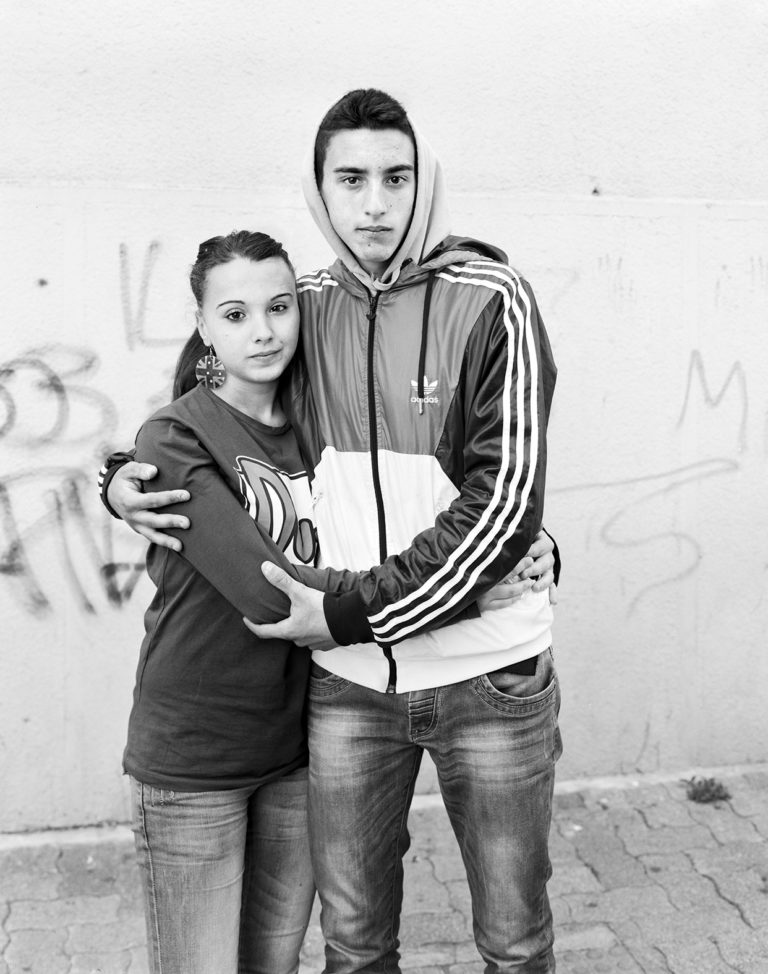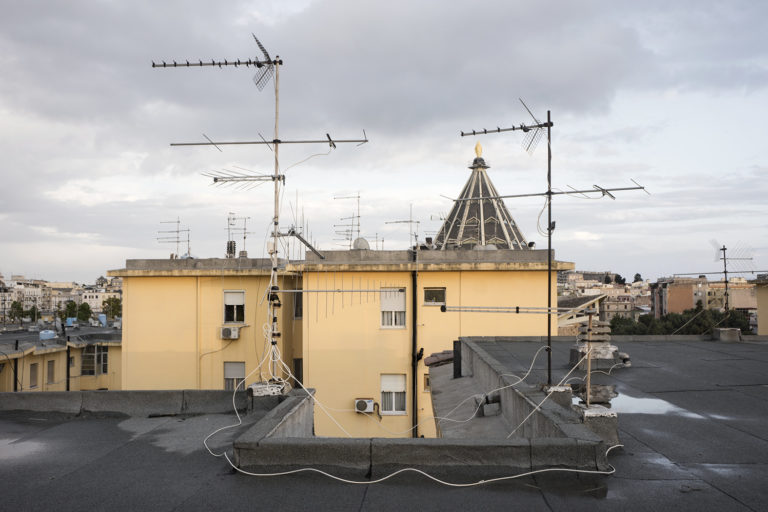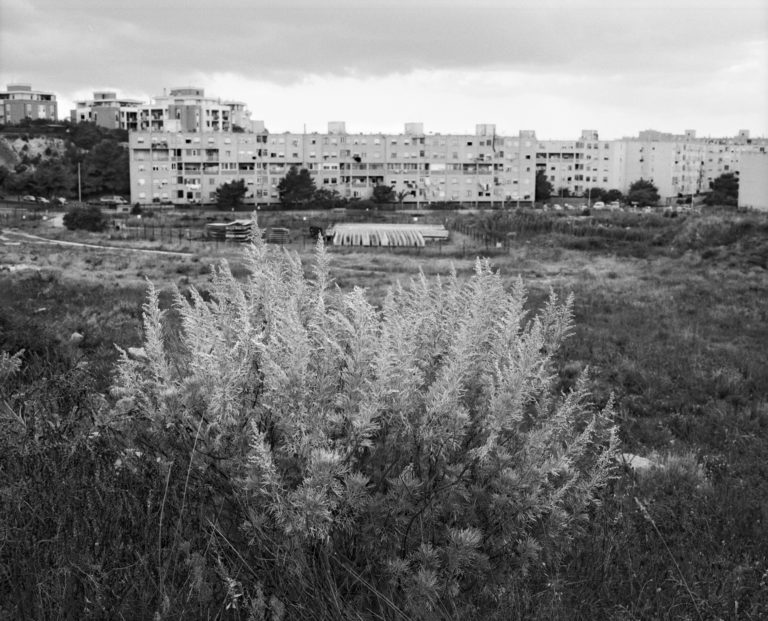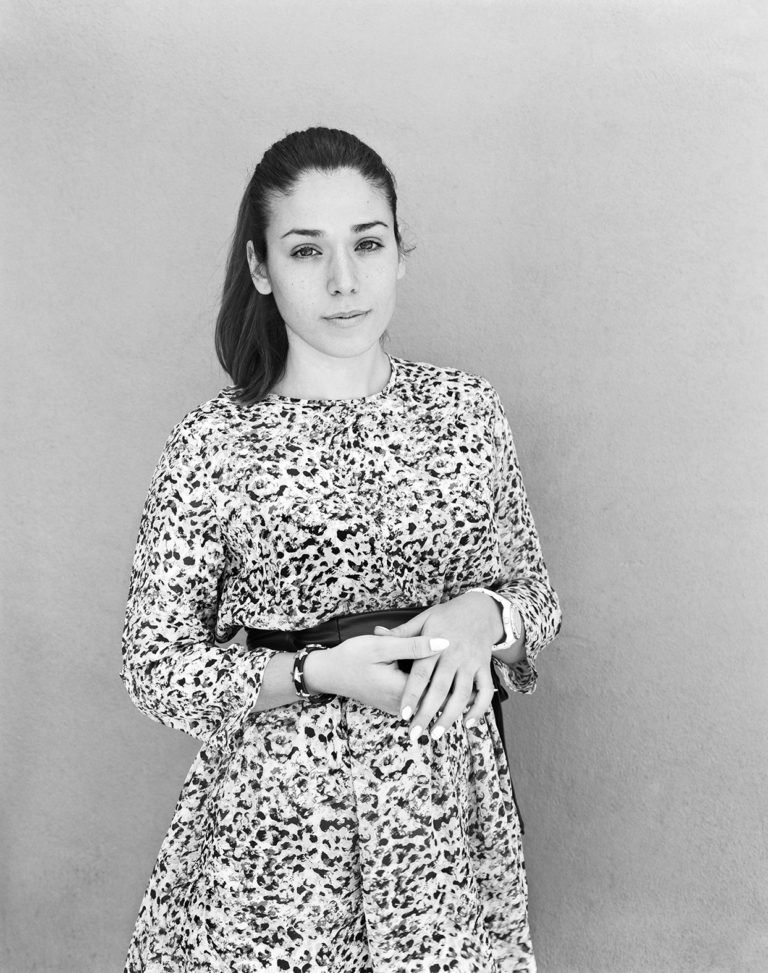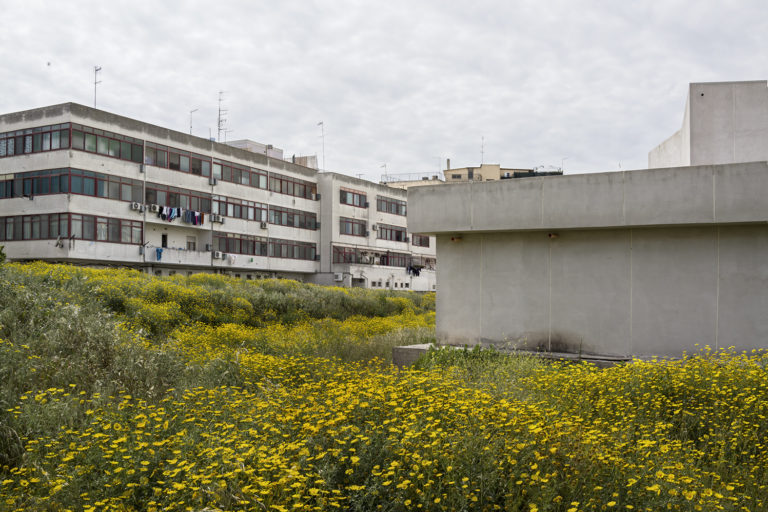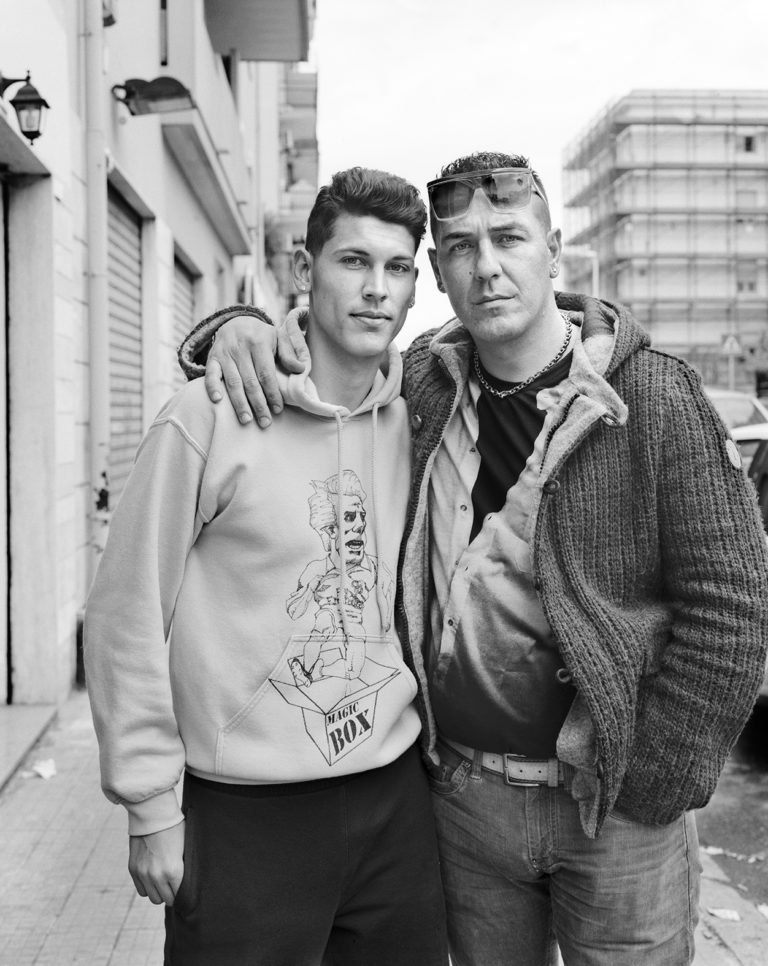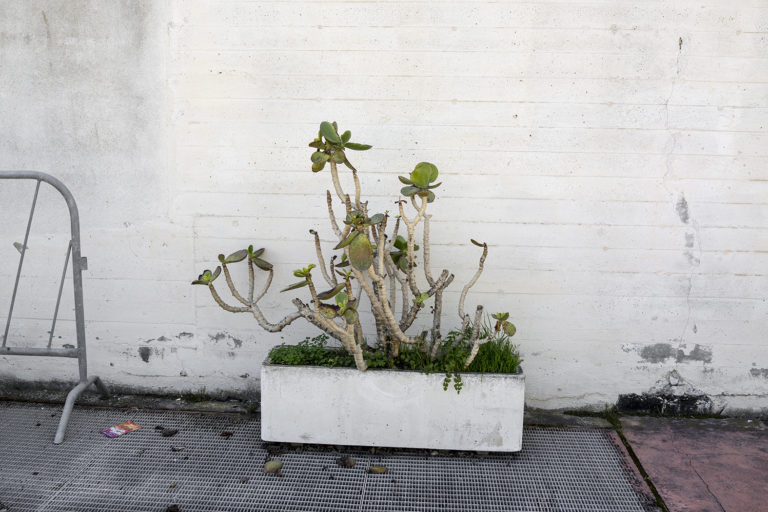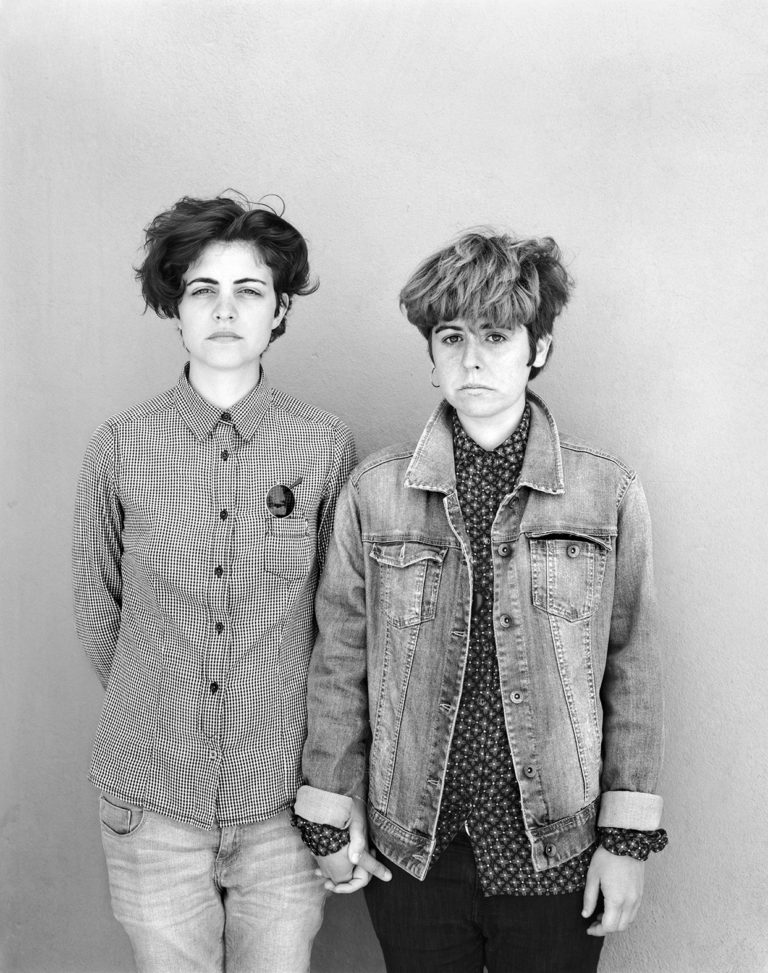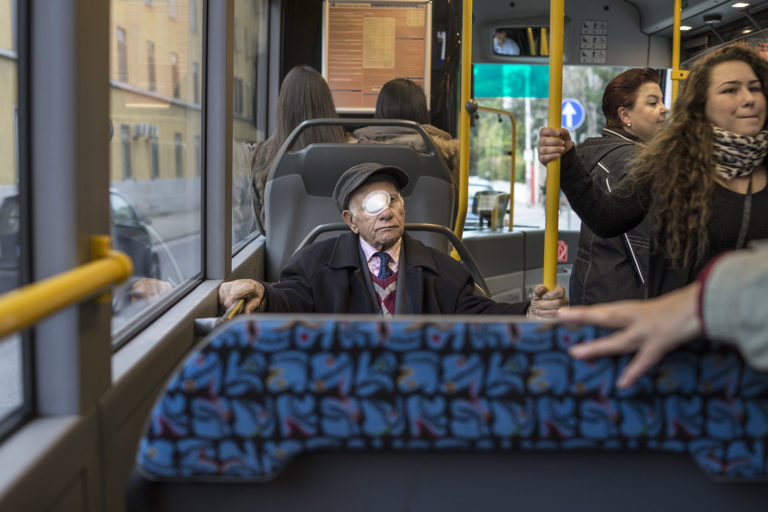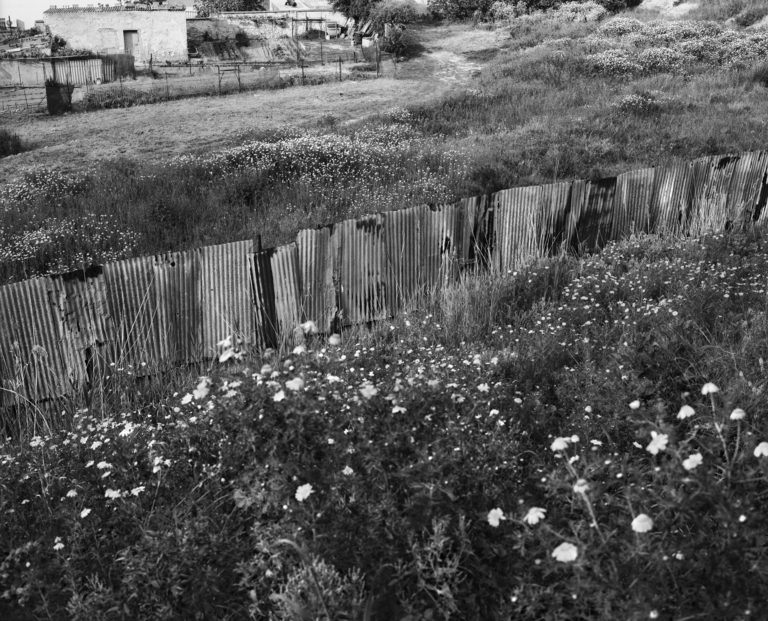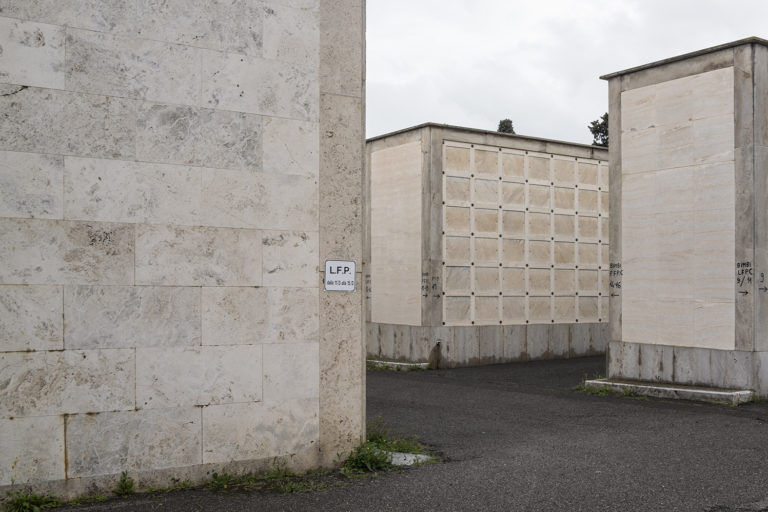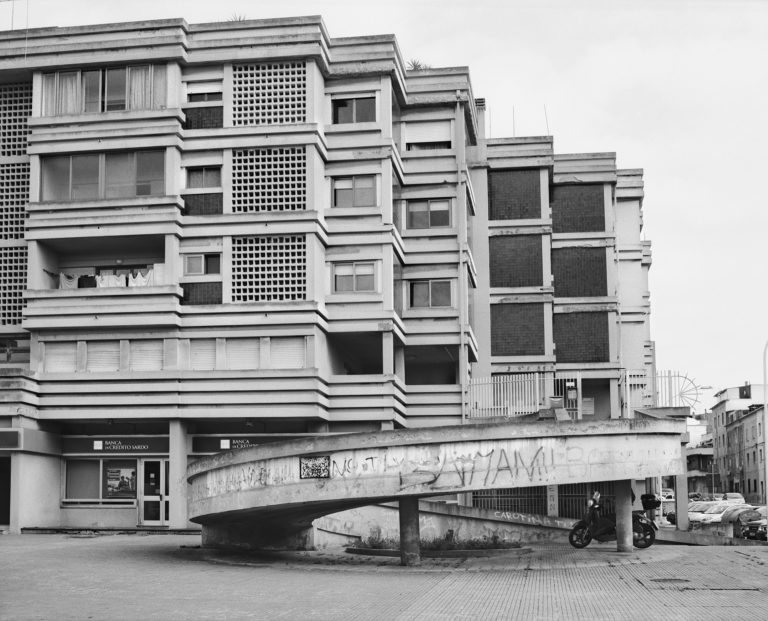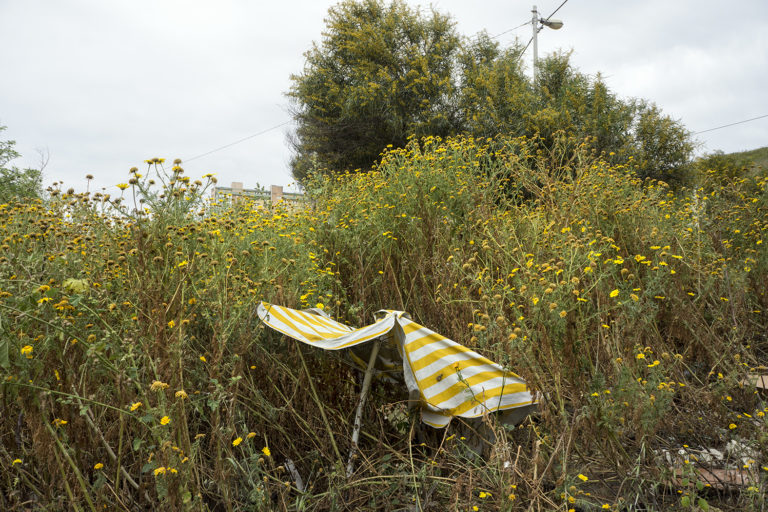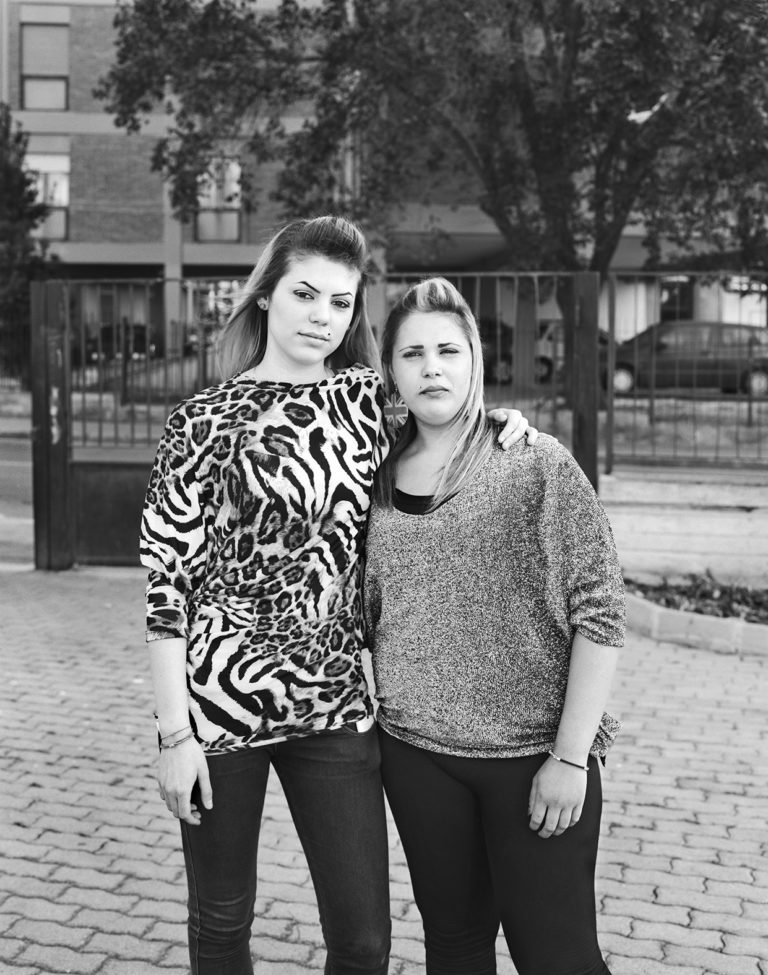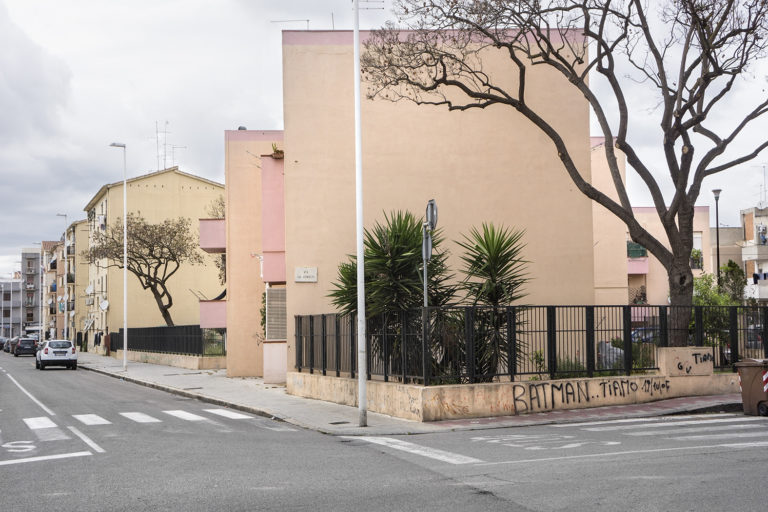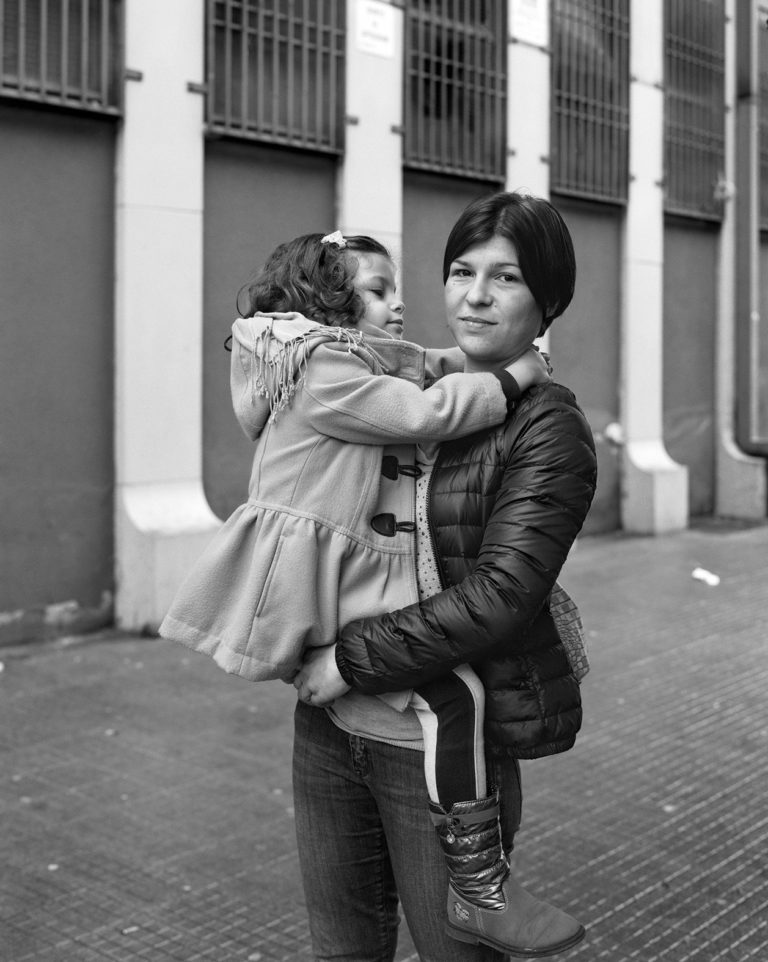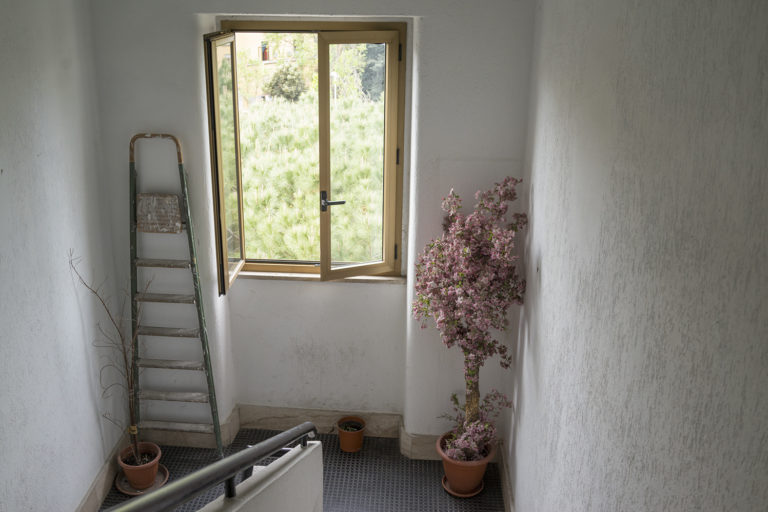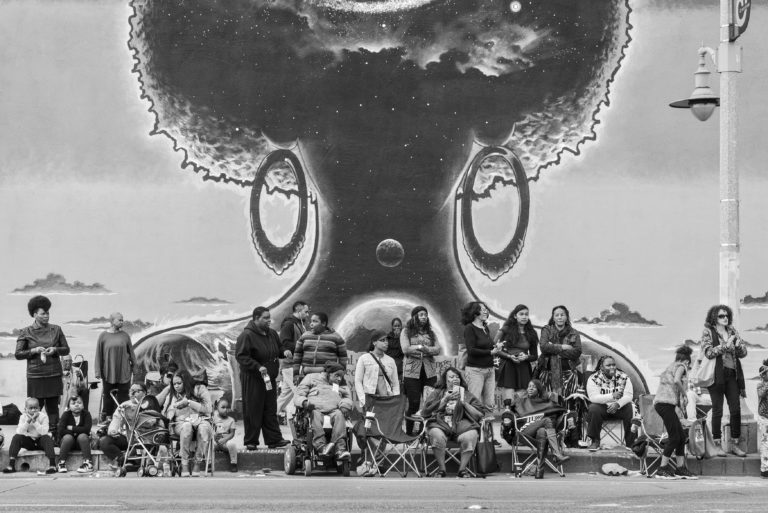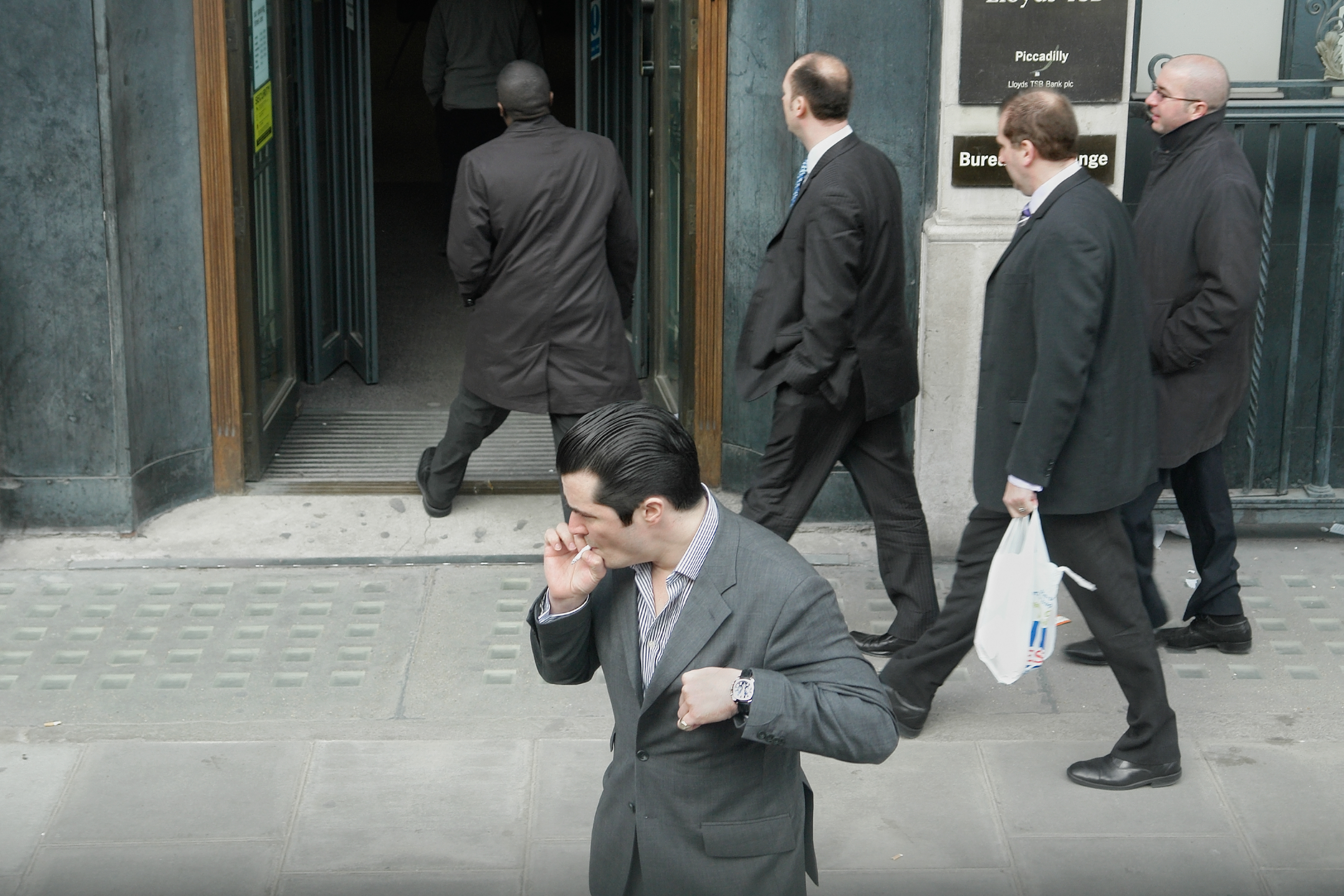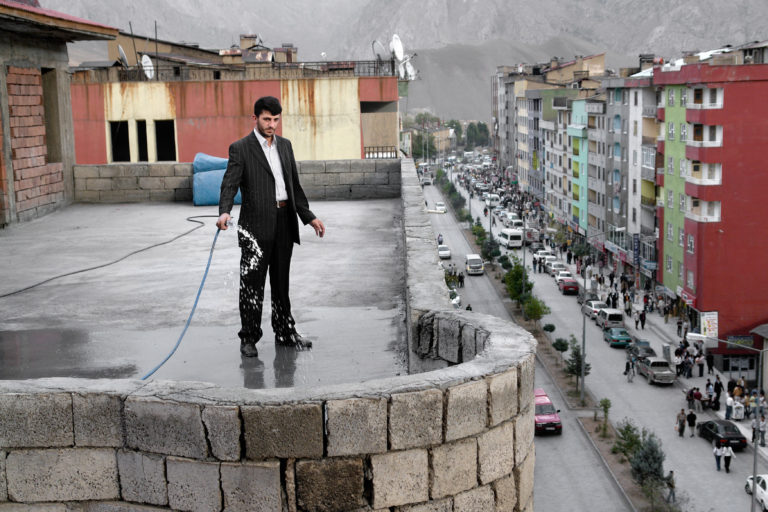“this Is Mirrionis” is the story in photographs of Cagliari’s Is Mirrionis and San Michele quarters through the eyes of Vanessa Winship and George Georgiou, commissioned by the Municipal Museums of Cagliari for the city’s candidature as the European Capital of Culture 2019, part of a public art project entitled eureca!, the evoking of the coming together of Europe and Cagliari, a story that saw the direct involvement of the people and their land.
The story of this visual exploration, as those of the other realities in which the two photographers worked for many years – the Balkans, the republics of the former Soviet Union, in Turkey and the United States – is enhanced by the personal and subjective view of both, but with a common focal point: the relationship between people and the spaces surrounding them in which they conduct their lives and negotiate the perennial fragmentation of the straight line between time and identity.
Through an ongoing exchange between documentary research and their personal lives, the two artists open a window onto the Is Mirrionis and San Michele quarters, unveiling a place of profound social and environmental interest, a goldmine of human situations and relations, evocative of the city and so many other Mediterranean cities which, as occurs elsewhere, are known in practice only on their insides.
Vanessa Winship and George Georgiou reveal what the everyday life of gestures and spaces conceals. They bring to life what passes beside us without touching us, they take us by the hand and accompany us into our world, hard and soft, with an act of truth, beauty and justice.
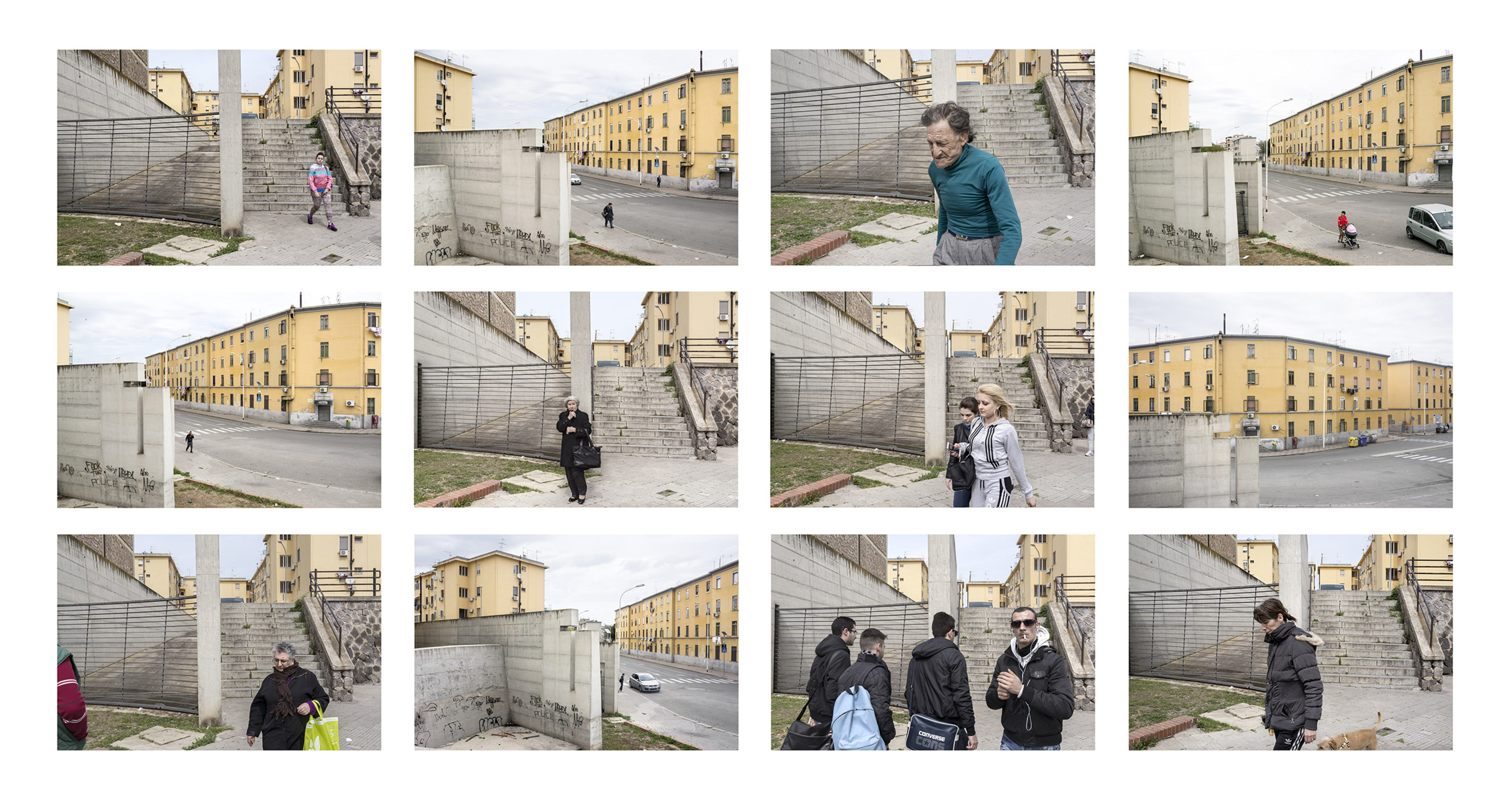
CULTURE THAT OPENS THE HORIZONS
From the very beginning, this administration has been engaged in an ambitious project of urban regeneration, with culture, and thus creativity and innovation in knowledge, as a motor of economic and social development. The planning of spaces and the reinterpretation of material geographies is approached in relation to immaterial signs, both the stratified ones to be rediscovered and the unknown ones to be imagined. In this way, the planning of public works produces a tapestry woven together with the immaterial mechanism of the municipal plan for cultural policies.
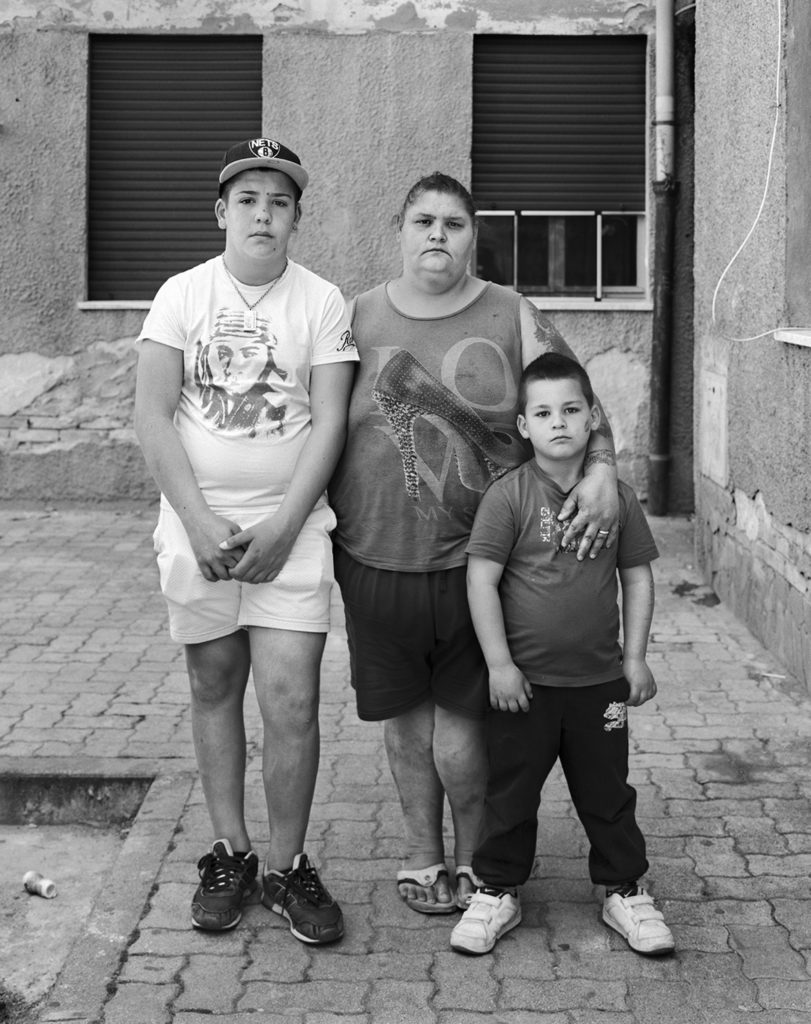
This five-year plan has as its goal that of making Cagliari a laboratory for experimentation and production, a place in which to create a model for development and growth that may become a stimulus for other realities in Europe and beyond. To represent it as a metaphor, vision, the immaterial thread going through all actions for the physical transformation of the city, is the thread that joins the interrupted pathways of people and places. One of the objectives of the process is to promote a progressive (re)opening of the city and make it the epicentre of an expanded and diffuse system as the guide, the motor of a new economic and social rebirth through the breaking down of social barriers and the overcoming of cultural frontiers. No longer a city closed within itself, but an open city, one that is inhabited, a city-archipelago of an island, a no-longer hegemonic centre of an urban constellation capable of coming together without cancelling the vital differences, with the rural areas representing and making concrete a system of horizontal relations.
In this itinerary leading to the progressive opening up and reuniting of the different areas, the creation of a model for development capable of conjugating enhancement of the existent – which is to say a multiplicity of stratified differences – with an imaginative capacity related to new possible futures, the concept of citizenship, declined as cultural, active and aware citizenship, assumes a key role. Rejoining areas, reinterpreting urban tissues, investigating their senses and meanings, rediscovering interrupted paths: this is the objective of the project for public relational art capable, through the fecund mediation of artistic languages, of involving the community in the reinterpretation and weaving of the threads, both old and new, that run through the space of a lifetime.
This has been, and continues to be, eureca!, since the work of the great, immense photographers George Georgiou and Vanessa Winship has succeeded in interpreting the eyes of an entire community, embracing them within a choral and polyphonic narration of places that rediscover their beauty in the stories and lives of every day, in the desires and aspirations of those who live and move in such places. Their images, those imperceptible instants, have generated an epiphany capable of imparting a lesson even to the sceptics: no longer the dichotomy between aesthetics and ethics, but an aesthetics which, on adopting the contemporary distortion of the concept of beauty, assumes the ethical duty to open up horizons, to indicate new possible worlds.
The weaving of the threads, started by George’s and Vanessa’s bright colours and black and white images, continues inexorably to exist, outside of the museums, beyond the prints and even the very images. It continues to exist because those horizons remain open and the planning of the beyond can become the heritage of an entire community called upon to share the new geographies and ways of experiencing them. “this Is Mirrionis”: in the playful ellipsis of the verb* that flows into the name of a quarter at the centre of an innovative plan, we find the sense of the exhibition organized by the Municipal Museums, at one and the same time the finishing line and the starting point.
How will Is Mirrionis be, and what can it continue to be? A question to which we are all called upon to answer: with the works for urban renewal now under way or about to begin and with the proper planning of resources it will be possible to make the area the centre of innovation and experimentation, with investments in culture, training and education. And without ever forgetting where we started from. Because this (is) Is Mirrionis.
Enrica Puggioni
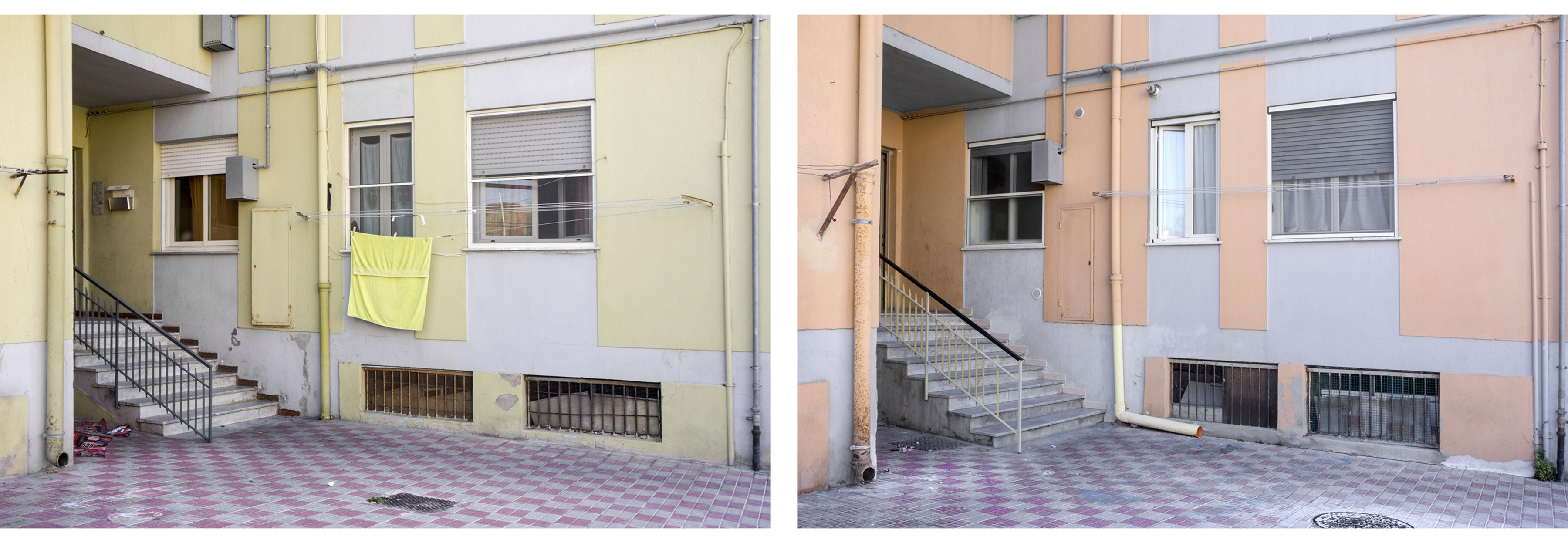
BEHIND THE APPEARANCES
The exhibition of photographs entitled “this Is Mirrionis”, is an important part of eureca!, a project born of the conviction that true art is capable of living in innumerable contexts and unveiling their invisible tissues. This is an ambitious journey: to make Cagliari a large urban laboratory for experimentation and hybridization of the languages of art, science and technology, a crossroads for populated and lively cultural itineraries capable of replacing mere fruition with the concept of active participation and involvement of the townsfolk; “this Is Mirrionis” represents an important step in the process of advancing Cagliari’s candidature as the European Capital of Culture for 2019, which aims to design a multicentric city capable of reinventing its urban tissue.
The Municipal Museums undertook this conceptual and practical journey in 2012, with the Residence of Marinella Senatore from the Campania region. Starting from March 2013, she has guided and involved the city’s community in the Sant’Elia quarter in the public art project, “Piccolo Caos” (Little Chaos), a melodrama in three acts, with video footage in the cinema verité style, the result of the encounter and collaboration of the quarter’s inhabitants who, in the two-fold role of scenario writers and actors, brought themselves into the play with their stories and creative experiences.
With eureca! attention has shifted to two other quarters of Cagliari, Is Mirrionis and San Michele, narrated in the images of the internationally renowned photographers George Georgiou and Vanessa Winship, called in to narrate the realities of the two quarters to bring out their identity, contradictions and mutations.
During their stay for the project entitled “The Artists’ Presence”, which began in March of this year, they documented the daily life, the most meaningful events, the habits of the inhabitants, the symbolic places such as the churches, the meeting places, the street market, the squares, but also the small shops and workshops. Most importantly, they made the acquaintance of everything and everybody, they earned the trust even of the most recalcitrant communities, they succeeded in seeing the beauty behind the appearances, what is behind every person and every thing.
The second part of the project took place together with the stay of the two artists. Under the title of “The People Experience”, the townsfolk participated in free workshops where they learnt to narrate Cagliari through images, photographs, video clips and audio documents. A fundamental role was played by the social networks in involving the residents, especially the youngest, who were active in the publication of posts and photographs. This was the case of the Invasioni digitali, which on 3 March began a progression from the heart of the San Michele quarter to the Municipal Art Gallery, in the search for little-known but extremely fascinating places in the two quarters, admiring the city from the heights and passing amongst the limestones near the prison to arrive at the Gallery.
The Gallery, which has expanded beyond its institutional confines to find connections, create bonds and involve the collectivity, now sees the results of its efforts in the new stage of the project “this Is Mirrionis”, thanks to which the urban tissue enters the institutional space in the form of an exhibition of photographs.
One hundred and twenty photographs are on display. The point of view is two-fold: that of George and Vanessa external and new, the influence of the inhabitants of the quarter that they succeeded in capturing. On looking at the photos we are surprised to find the beauty of these parts of the city. A beauty of a different kind, similar to that of many other cities today, in which we catch the rhythm, sometimes drowsy, sometimes flat, almost metaphysical, of stories recalling the suburbs explored by Pier Paolo Pasolini, when the proliferation of the urban peripheries promised, in the “fabulous” 1960s, a new life, with refrigerators and TV sets – a modern, advanced life.
The catalogue of the exhibition
In Vanessa’s and George’s photos what are lacking are the blinding whites of the new tower blocks narrated by Pasolini; they are replaced by the grafitti of Cagliari’s writers, by the urban vegetation which in the meantime has covered a part of the façades, sometimes in a disorderly, improbable way, by the satellite dishes, but also by that special charm of lived-in places. Now the suspended and impalpable time remains fixed on the people, on everyday gestures which from the public sphere focus on the intimate and private dimension of life in the quarter.
Anna Maria Montaldo
